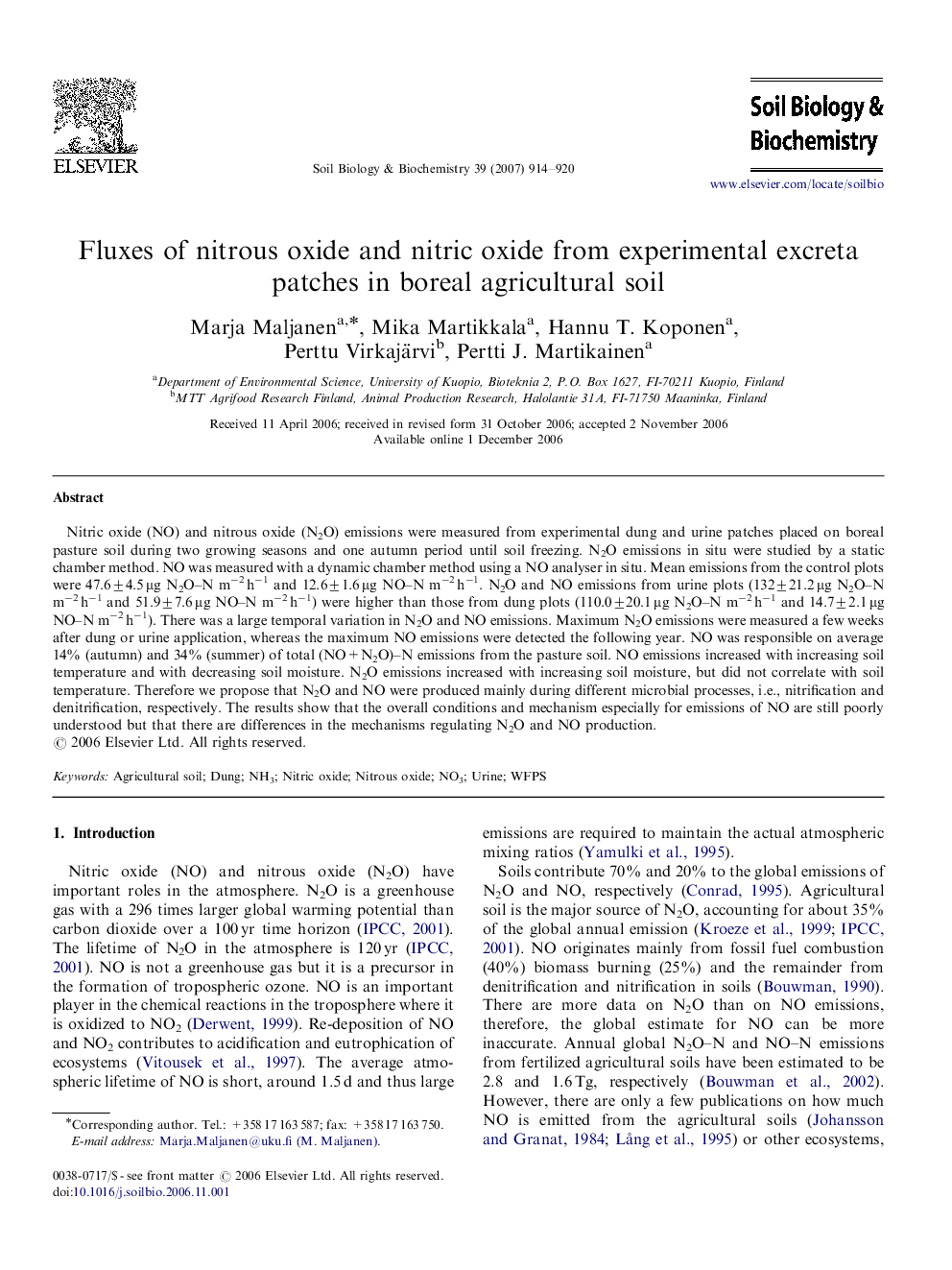| Article ID | Journal | Published Year | Pages | File Type |
|---|---|---|---|---|
| 2026362 | Soil Biology and Biochemistry | 2007 | 7 Pages |
Nitric oxide (NO) and nitrous oxide (N2O) emissions were measured from experimental dung and urine patches placed on boreal pasture soil during two growing seasons and one autumn period until soil freezing. N2O emissions in situ were studied by a static chamber method. NO was measured with a dynamic chamber method using a NO analyser in situ. Mean emissions from the control plots were 47.6±4.5 μg N2ON m−2 h−1 and 12.6±1.6 μg NON m−2 h−1. N2O and NO emissions from urine plots (132±21.2 μg N2ON m−2 h−1 and 51.9±7.6 μg NON m−2 h−1) were higher than those from dung plots (110.0±20.1 μg N2ON m−2 h−1 and 14.7±2.1 μg NON m−2 h−1). There was a large temporal variation in N2O and NO emissions. Maximum N2O emissions were measured a few weeks after dung or urine application, whereas the maximum NO emissions were detected the following year. NO was responsible on average 14% (autumn) and 34% (summer) of total (NO+N2O)N emissions from the pasture soil. NO emissions increased with increasing soil temperature and with decreasing soil moisture. N2O emissions increased with increasing soil moisture, but did not correlate with soil temperature. Therefore we propose that N2O and NO were produced mainly during different microbial processes, i.e., nitrification and denitrification, respectively. The results show that the overall conditions and mechanism especially for emissions of NO are still poorly understood but that there are differences in the mechanisms regulating N2O and NO production.
